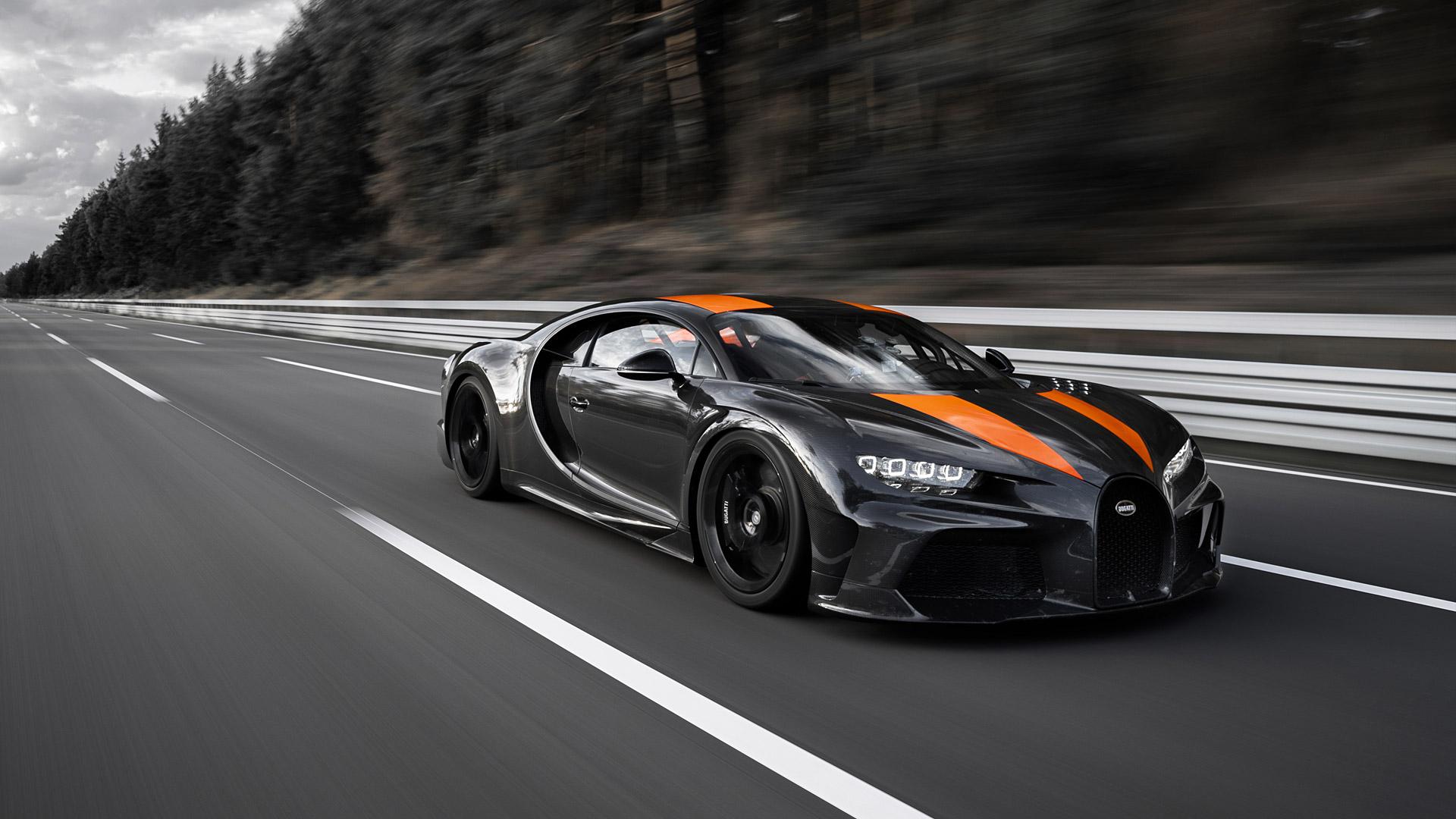When it comes to performance, everyone loves quoting 0–60 mph times. It’s the go-to benchmark, the chest-thumping figure that brands plaster across press releases and showroom brochures.
But here’s the reality: in the day-to-day grind—at traffic lights, stop signs, or merging into city traffic—it’s the 0–30 mph sprint that really tells you how lively a car feels off the line. That first burst of acceleration can mean the difference between a confident jump into traffic or a white-knuckled merge as faster drivers barrel down behind you.
Some cars deliver immediate punch, leaping forward with the kind of force that pins you to the seat and makes every green light feel like launch control. Others? Not so much. Sluggish throttle response, gutless engines, or lazy transmissions can make even a short burst to 30 mph feel like a chore.
This article dives into both ends of the spectrum: the five cars that absolutely rip off the line with mind-blowing 0–30 times—and five that struggle to get moving at all. Whether you’re shopping for a thrill ride or just want to avoid being “that car” holding up traffic, this list cuts through the hype to show you what really moves when the light turns green—and what doesn’t.
Cars With the Fastest 0–30 MPH Times
In the world of high-performance cars, 0–60 MPH times usually steal the spotlight—but here’s the thing: most of our real-world driving happens well before 60.
In this article, we’re zeroing in on the true neck-snappers—the cars that don’t wait around to hit their stride. From high-end electric monsters to gas-powered torque kings, these are the machines that go from zero to hold on tight in the blink of an eye.
1. Tesla Model S Plaid – ~1.0 Second (0–30 MPH)
Tesla’s flagship performance sedan obliterates low-speed acceleration benchmarks. Thanks to three electric motors and instant torque, the Model S Plaid can reach 30 mph in just about a second.
The lack of gear shifts and all-wheel-drive traction make it almost unbeatable in urban sprints. It’s not just fast it’s nearly surreal.
From a visual standpoint, distinguishing the latest Model S from its predecessor won’t be easy. The headlights and taillights seem to feature updated internals, subtly changing their lighting signatures (the headlights now incorporate adaptive beams), while the Plaid variant receives a redesigned front bumper with larger, more angular air intakes.
All Model S trims—including the standard All-Wheel Drive version and the high-performance Plaid—now come with refreshed wheel designs. The standard Model S AWD rides on 19-inch wheels, with 21-inch wheels offered as an upgrade. The Plaid offers the same size options, though its wheel styles differ from those on the AWD.
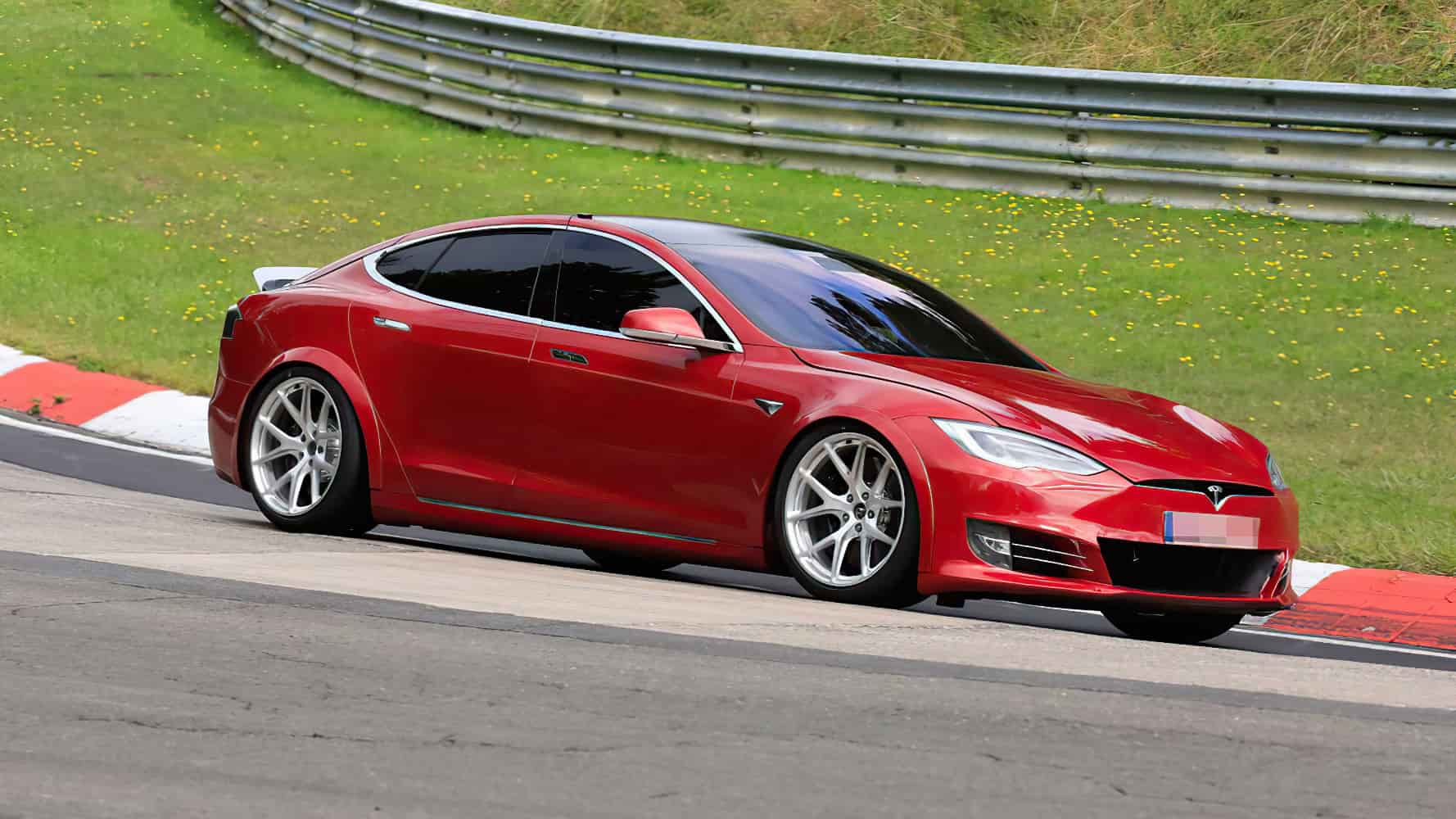
Tesla refers to the Plaid’s exterior look as “new,” though based on what’s visible, it appears the changes are limited to the bumpers and lower aerodynamic components.
These refinements are intended to enhance aerodynamics and boost high-speed stability. In practical terms, most casual observers likely won’t spot any major differences in this version of the Model S. What they might notice is the addition of a new exterior color: Frost Blue. As with all non-gray paint options, it carries a premium—$2,500 in this case.
Inside the Model S, changes are nearly nonexistent. The most notable addition is the inclusion of what Tesla calls “dynamic” ambient lighting, which “brings unique animations along the dashboard and doors” upon entry.
Also Read: 5 Sedans with the Best Under-Hood Accessibility and 5 with the Most Crowded Engine Bays
2. Porsche Taycan Turbo S – ~1.1 Seconds
The Taycan Turbo S is Porsche’s electric masterpiece, blending luxury with cutting-edge performance.
Like the Tesla, it leverages instant torque and AWD to launch hard from a stop. Its 0–30 mph time of roughly 1.1 seconds makes it a streetlight dragster with refined manners.
We’ve already experienced Porsche’s extensively updated Taycan in its standard form, and just like that variant, the revisions here go far beyond its mind-bending straight-line speed. While visual changes are minimal—the most notable being a redesigned front bumper—they conceal some serious advancements beneath the surface.
Similar to the base model, the understated changes to the Taycan’s exterior mask a significantly reworked electrical system.
A brand-new battery now resides beneath the cabin, offering a net capacity of 97kWh. Despite its increased capacity over the outgoing version, it actually weighs less—even if the reduction is only 15kg, it still marks progress in the right direction.
Porsche has also reworked the cooling systems, upgraded the inverter software, and boosted the regenerative braking power from 290kW to as much as 400kW. This means the car leans less on its mechanical brakes and wastes less energy when decelerating—resulting in improved efficiency. There’s also a newly introduced heat pump.
In the case of this Turbo S variant, a newly developed rear motor plays a key role in delivering its performance. This updated component helps the system achieve an eye-watering 939bhp—an increase of 188bhp over the previous version, which was already blisteringly quick. Torque now peaks at a colossal 1,110Nm.
But with that level of straight-line aggression, how exactly do you approach driving such a beast? The first word that comes to mind: carefully. The Taycan still carries the refinement and poise expected from a Porsche, but that staggering pace demands delicacy on tighter, more technical roads.
Push too hard on the throttle or get overly ambitious with your steering inputs through a sequence of bends, and the car’s power-to-weight equation can catch you out quicker than you’d think.
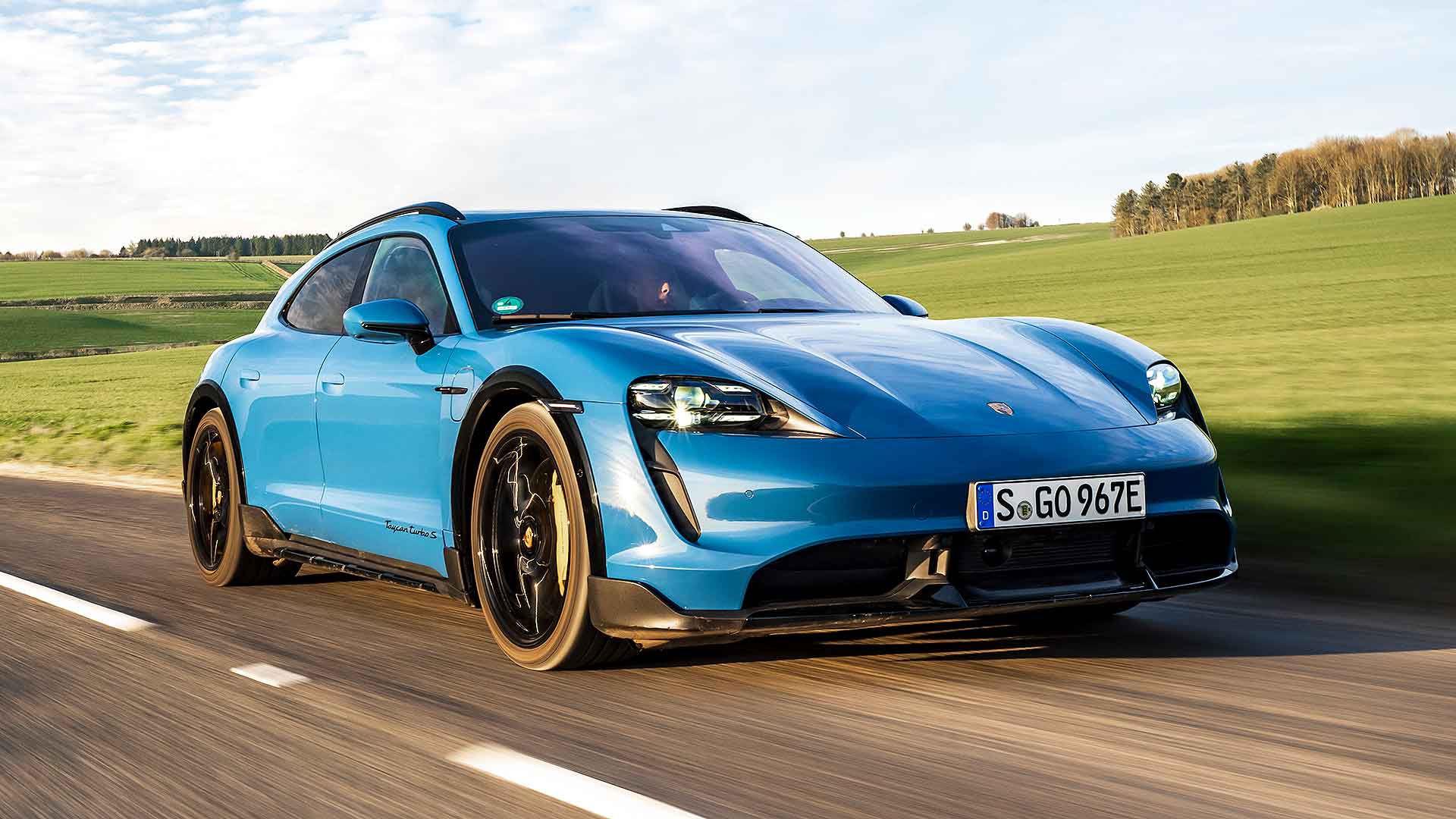
The steering, while surgically accurate, doesn’t offer a huge amount of feedback, and the chassis stays so flat that you don’t get much body roll as a warning either—meaning the limits can arrive abruptly. You’ll need to stay sharp. Learn the car’s boundaries, though, and you can flow through corners with finesse and unleash outrageous speed on the straights.
As with the steering, the braking system could benefit from more feedback. While there’s enormous stopping force at high speeds, low-speed modulation isn’t as smooth or intuitive as it could be—it takes a bit of finesse to manage gentle stops cleanly.
Judged in isolation, this remains a thrilling and highly capable performance EV, but the arrival of the Hyundai Ioniq 5 N shows just how high the bar has been set for electric cars that truly engage the driver.
When we tested the revised base Taycan, we were floored by how efficient it was—it genuinely ranks among the most economical EVs available at any price point.
With the Turbo S, thanks to its dual-motor setup and the ever-present temptation to exploit all that power, we couldn’t quite replicate the base model’s easy 4.0mi/kWh-plus efficiency. Even so, the Turbo S still consumed less electricity than many everyday electric crossovers with a fraction of its output.
3. Dodge Challenger SRT Demon – ~1.1 Seconds
Built for the strip, the Challenger SRT Demon was engineered to demolish short-distance drag races. With a 6.2-liter supercharged HEMI V8 pumping out 840 horsepower (on race fuel), it crushes the 0–30 window.
Special drag radials and launch control give it a fierce jump off the line, but traction can be tricky without a prepped surface.
Roaring at the altar of sheer power is the ferocious 1025-hp Dodge SRT Challenger Demon 170—a beast born of grit and steel in Ontario, Canada. Though it closely resembles the original Demon, which had a single-year run in 2018, this version cranks things far past eleven.
Dodge’s engineering team has done the hard work of extracting a four-digit horsepower number from the ultimate form of the brand’s legendary Hellcat V-8. The supercharged 6.2-liter engine hits its full potential on E85 fuel, and it’s this 170-proof ethanol blend that gives the car its name.
Even if you fill it with standard 91-octane gas, the Demon 170 still cranks out a staggering 900 horsepower. The 2023 Demon 170 is nothing short of an outrageous farewell to what was already one of the most unhinged muscle car lineups in automotive history.
In 2024, Dodge brings the Demon name back to life. At first glance, it’s almost indistinguishable from the previous model, but this time it brings even more fury—with a maximum output of 1025 horsepower. The Demon 170 is the final entry in Dodge’s seven-car “Last Call” series. Production is capped at 3300 units, with 3000 allocated to the U.S. market.
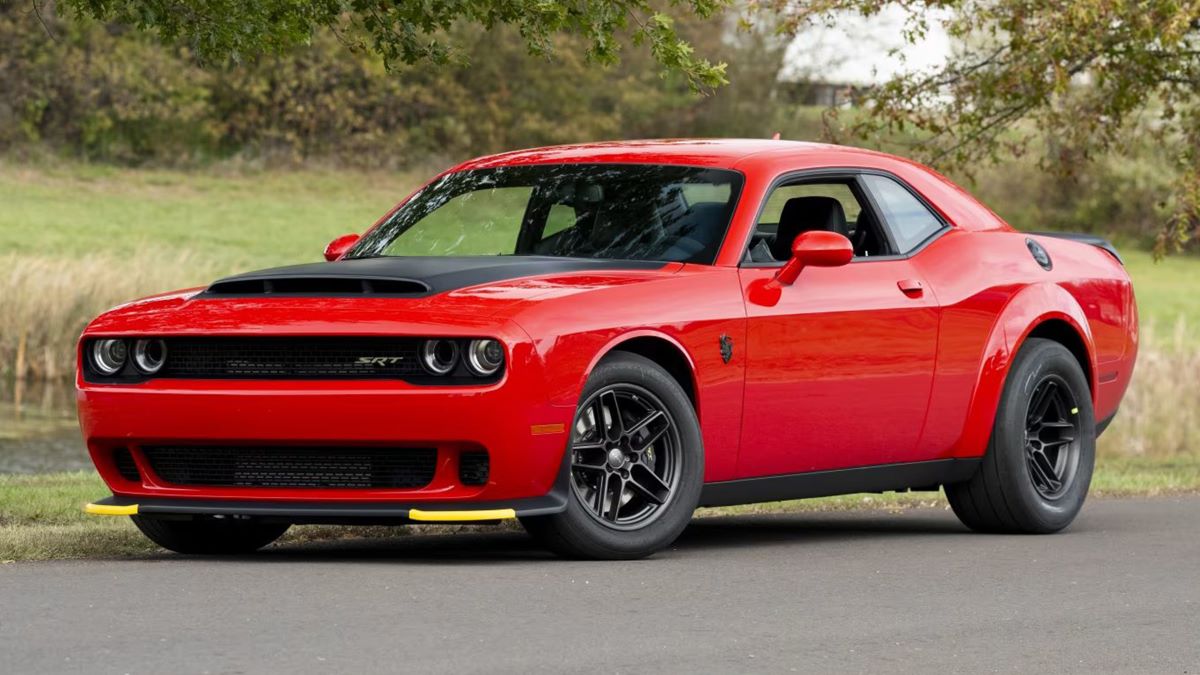
Dodge doesn’t load up the options list for this devilish coupe. A lightweight wheel package is available for $11,495 and shaves an estimated 25 pounds off the already hefty Challenger.
There’s also talk of an additional street-tire package, though its cost hasn’t been disclosed. Buyers are free to fit their own wheels and tires if Dodge’s options don’t suit them. One option we’d definitely add is the available passenger seat—provided you can find someone bold enough to sit there.
The Demon 170’s most outrageous element lies beneath its hood. Tucked between the front fenders is a supercharged 6.2-liter V-8 that’s undergone so many internal upgrades that it shares only a camshaft with the engine from the previous Demon. When fueled with E85, it cranks out 1025 horsepower and 945 pound-feet of torque.
If E85 isn’t available, running on 91-octane fuel still delivers an impressive 900 horsepower and 810 pound-feet of torque. Reinforcements extend beyond the engine, with a strengthened driveshaft and a more robust rear axle. An eight-speed automatic still manages gear changes, and the upgraded transmission brake now offers adjustable launch settings.
The Demon 170 rides on Mickey Thompson ET Street R tires—245/55R-18s in the front and massive 315/50R-17s in the rear. Dodge claims it’s capable of a quarter-mile in 8.61 seconds at 151 mph—but only on a properly prepped track.
The same goes for the reported 0–60 mph time of just 1.66 seconds. We haven’t had the chance to test the new Demon 170 ourselves (and we may never get to), but we’ll update this section if that opportunity ever comes.
Also Read: 12 Secret Features Hidden in Popular Cars That Will Surprise You
4. Rimac Nevera – ~1.1 Seconds
This Croatian hyper-EV is one of the quickest production vehicles ever built. The Rimac Nevera combines nearly 2,000 hp with advanced torque vectoring and AWD.
Its 0–30 mph time of around 1.1 seconds is almost mind-bending, proving electric hypercars are now at the top of the food chain.
The Rimac Nevera exists in a category that still doesn’t have a name—it’s truly in a league of its own. With more horsepower than the Bugatti Tourbillon—which, notably, shares the same parent company—this Croatian hyper-EV is packed to the brim with extremes.
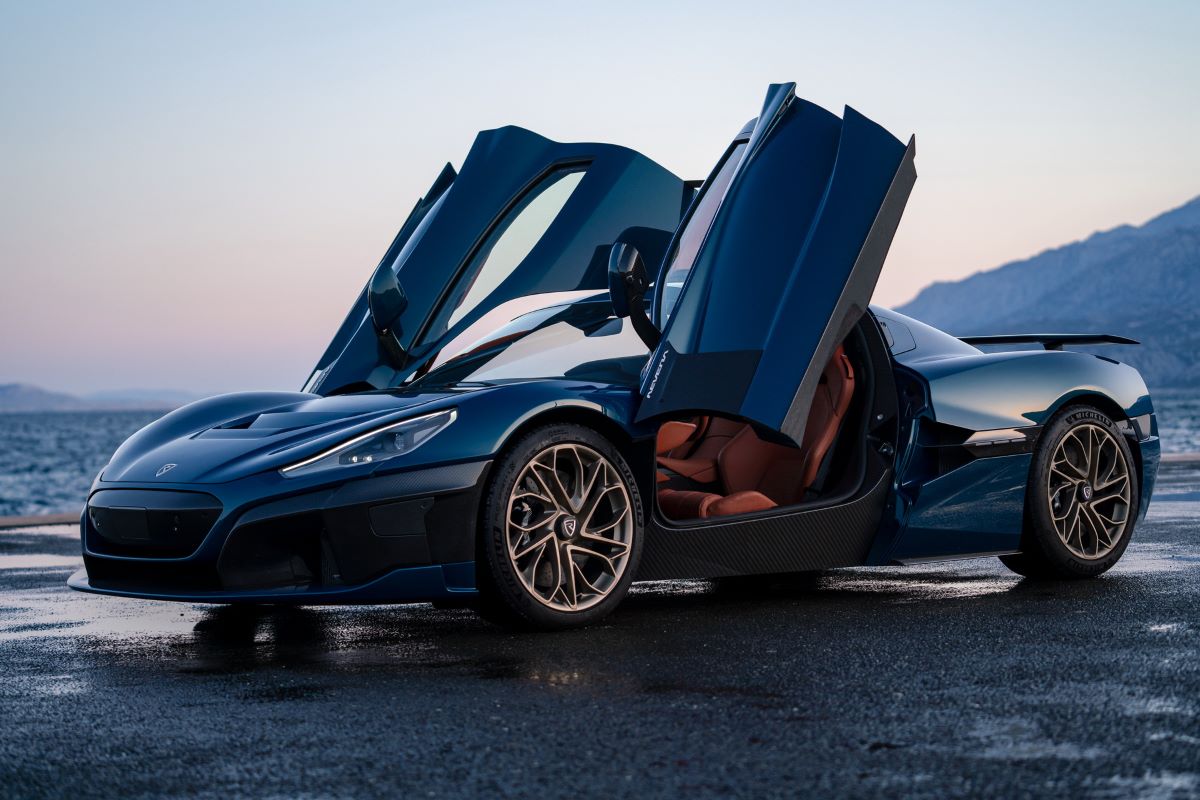
Its design and engineering are overflowing with cutting-edge tech, from a highly advanced electric torque-vectoring system to adaptive aerodynamics and a carbon-fiber monocoque straight out of motorsport.
But the Nevera isn’t merely a showcase of stats and futuristic systems—this is a car with genuine character. For the select few fortunate enough to own one, every drive promises to be an event.
The chassis tuning is superb, offering a balanced, composed ride; the steering feels organic and well-weighted; and the brakes deliver confident, strong stopping power. One standout feature: instead of relying on synthetic “engine” sounds, the Nevera delivers authentic mechanical noises—adding to its visceral appeal.
In terms of rivals? The closely related Pininfarina Battista offers roughly the same output thanks to its Rimac-sourced powertrain, or for a similar price point, you could opt for something like the Ferrari Daytona SP3. But when it comes to exclusivity, the Rimac Nevera stands apart—it will be even more scarce than that limited-run Ferrari.
5. Bugatti Chiron Super Sport – ~1.3 Seconds
While the Chiron is more famous for its top speed, its low-speed acceleration is also brutal. With 1,577 hp from a quad-turbocharged W16 engine, the Chiron can sprint to 30 mph in just over a second.
Despite being a heavy grand tourer, the AWD system ensures maximum grip at launch. Automakers across the board are scaling back development of internal-combustion engines, shifting their focus to hybrids and full-electric setups for their most extreme offerings.
That context makes the Chiron Super Sport we just drove particularly significant. Alongside a couple of other Bugatti models using the same 1578-hp powerplant, this car is likely to stand as the most powerful combustion-engine production model ever released by a major manufacturer.
Things could still change. Models from Koenigsegg, SSC, and Hennessey all make claims to similar or greater horsepower, but many of those haven’t yet cleared road-legal certification, and all rely on E85 fuel.
In contrast, the Bugatti generates its full 1578 horsepower on 93-octane premium pump gas, with deliveries set to begin early next year. When the final chapter on the internal-combustion engine is written, this car might just serve as its exclamation point.
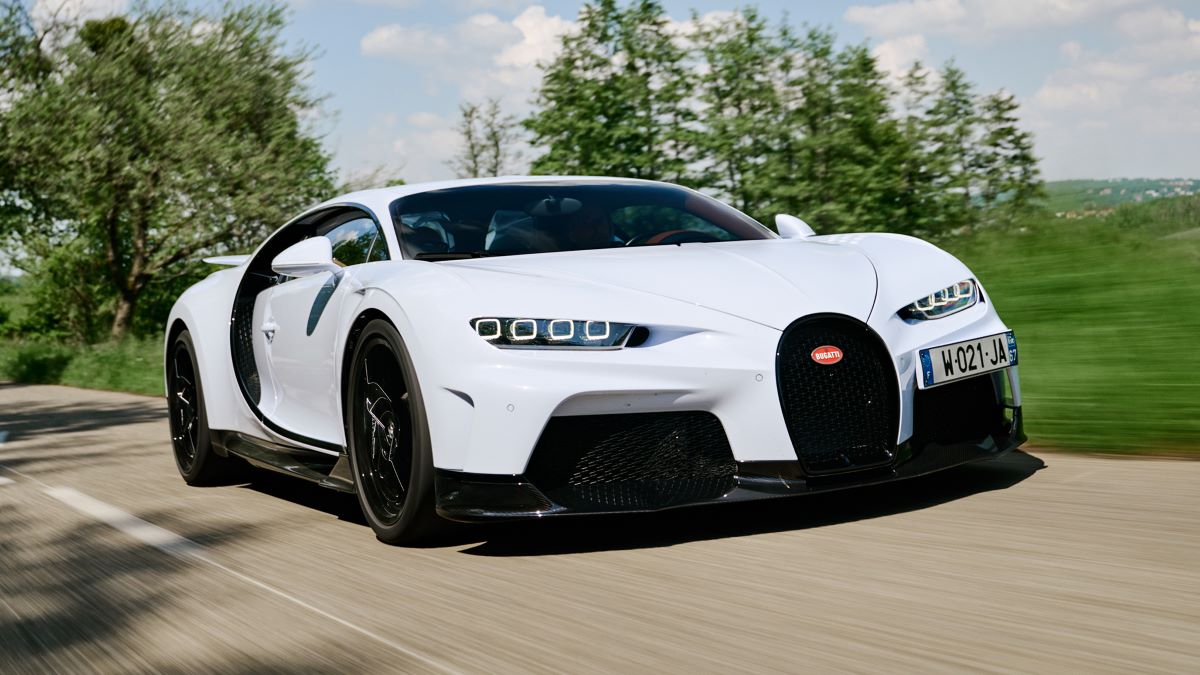
The Chiron also lays claim to being the world’s fastest production car, thanks to British Le Mans winner and Bugatti test driver Andy Wallace, who clocked 304.8 mph in a Super Sport at Volkswagen’s Ehra-Lessien test track back in August 2019.
That figure isn’t without its share of debate—the car used was a prototype, and the run only measured a one-way peak speed. Other manufacturers continue to target the title, but Bugatti has made it clear it won’t be defending the record.
In recognition of the achievement, Bugatti first announced the Super Sport 300+, powered by the same uprated engine as the record-setting prototype. Just 30 of those were made, all finished in the car’s signature black-and-orange livery. Each one is already spoken for, deliveries are now underway, and it’s unlikely we’ll have the opportunity to test one ourselves.
Now enters the standard Super Sport—“standard” in name only. According to Bugatti, it’s mechanically and aerodynamically identical to the record car, but owners can spec it to their taste.
Unlike the 300+, production isn’t fixed by a specific unit count, but rather limited by the fewer than 50 Chiron build slots remaining out of the planned 500-car total. Both versions, however, have their top speeds electronically capped at 273 mph.
Cars That Are Sluggish Off the Line (0–30 MPH)
Not every car jumps off the line with urgency—and some don’t even seem interested in trying. While 0–60 mph times dominate spec sheets and bragging rights, it’s the first 30 mph where real-world impressions are often formed.
That stoplight surge, that quick merge into traffic, or that crawl out of a parking lot—these are the moments where sluggishness is most noticeable, and where some vehicles, frankly, fall flat.
In this article, we’re digging into the cars that hesitate when the light turns green. Whether due to weight, gearing, hybrid lag, or conservative tuning, these models are slow to get moving. Some will surprise you, others might not, but all of them share one thing in common: off-the-line performance that leaves something to be desired.
1. Mitsubishi Mirage – ~3.8 Seconds
The Mirage is a budget subcompact with one of the weakest engines on the market a 1.2-liter 3-cylinder producing only 78 horsepower.
Its 0–30 mph time is painfully slow for modern standards. CVT tuning for fuel economy doesn’t help, making this car feel underpowered from a stop.
Subcompact cars like the Mirage are becoming increasingly rare, but Mitsubishi’s pint-sized commuter continues to be one of the most budget-friendly and fuel-efficient options out there.
Thanks to its 2021 facelift, it sports a slightly sharper appearance, and for this year, Mitsubishi sweetens the deal even further by adding two years of limited maintenance to its already impressive warranty across the entire lineup. Small updates to the standard features on the LE trim also bring welcome value.

That said, the driving experience in the Mirage leaves a lot to be desired. The small engine doesn’t deliver much power, and what it does offer comes in with noticeable strain and harshness. Steering feel is vague, and the ride quality can be rough and unsettled. In short, there are more capable choices available in this shrinking segment.
One of the Mirage’s most defining quirks is its minuscule powertrain. It runs a 1.2-liter inline three-cylinder engine paired with a CVT automatic. The output stands at 78 horsepower and 74 lb-ft of torque—numbers that sound underwhelming, but the Mirage’s featherweight construction, with even the heaviest model just tipping past 2,100 pounds, helps balance things slightly.
This lightweight build, combined with front-wheel drive and a fuel-sipping engine, makes the Mirage impressively efficient without the need for hybrid tech. Official EPA ratings clock in at 36/43 mpg city/highway for the hatchback and 35/41 mpg for the sedan.
2. Toyota Prius (Base Model, Older Gen) – ~3.6 Seconds
While newer Prius models are quicker, older generations were designed almost exclusively for efficiency. The electric motor and Atkinson-cycle engine combo prioritized fuel savings over speed, resulting in a lazy 0–30 mph acceleration that’s more of a creep than a sprint.
Toyota rolled out a thoroughly redesigned Prius for 2023, bringing bold new exterior styling, improved driving dynamics, upgraded tech, and—as always—exceptional fuel efficiency. For 2025, the Prius returns largely unchanged, with the main update being the introduction of a new Nightshade Edition package.

This stealth-themed variant adds a dose of attitude with blacked-out badges, door sills, front door handles, and a shark fin antenna. Additional exterior features include projector lamps that display the Prius logo and 19-inch wheels, also finished in black. Buyers can choose between Wind Chill Pearl and Midnight Black Metallic for the exterior paint.
Inside, the Nightshade Edition continues the dark theme with a black interior highlighted by gray contrast stitching. Outside of this new trim, the rest of the Prius lineup carries over unchanged from the 2024 model year.
3. Smart Fortwo – ~4.0 Seconds
The Smart Fortwo was never meant for speed, and it shows. With a tiny 3-cylinder engine and a sluggish automatic transmission, this car struggles to get moving quickly.
Merging into traffic or making a left turn can be nerve-racking if you’re used to quicker cars. In 2019, Mercedes-Benz rebranded the Smart line as smart-EQ, aligning it with the brand’s electric vehicle strategy. The updated lineup was offered as either a two-door coupe or a convertible, both fully electric.
This move followed Mercedes-Benz’s earlier collaboration with French automaker Renault on the third-generation smart fortwo, which debuted in 2014. Just a few years later, the electric variants of the city car adopted the EQ badge—part of Mercedes’ broader naming convention for EVs.
By the fall of 2019, the refreshed smart-EQ lineup included facelifted versions of both the fortwo coupe and fortwo cabriolet. At the same time, Mercedes-Benz discontinued all internal combustion engine models across the Smart range, including the forfour, returning the brand to its original vision: a purely electric vehicle tailored for urban use.

Visually, the facelift introduced a smiling lower grille framed by side scoops and optional fog lights. The headlights were subtly reshaped, now incorporating daytime running lights that outlined the inner edges.
From 2019 onward, all fortwo models featured LED lighting, which improved nighttime visibility and reduced energy use compared to older halogen or Xenon bulbs. From the side, the fortwo retained its steep windshield and short roofline. A vertical tailgate was installed behind the pronounced B-pillars, topped with plastic trim and a small roof spoiler.
Inside, the cabin saw upgrades over the 2016 model, including seats with tall backrests and integrated headrests. The driver faced the familiar smart instrument cluster, featuring a TFT display encircled by an analog speedometer.
A new infotainment system was added to the center stack, now supporting Bluetooth connectivity. Even the base trim came well-appointed with air conditioning and heated seats.
The center console housed the gear selector, a pair of cup holders, and a small drawer on the side for stashing coins or earbuds. Behind the compact cabin was a modest trunk positioned above the rear axle and the electric motor.
4. Nissan Versa (Older Models) – ~3.7 Seconds
Like the Mirage, the Nissan Versa (especially pre-2020 models) focused on affordability and fuel efficiency. The result? An anemic launch.
Early CVT-equipped Versas had laggy throttle responses and slow acceleration at low speeds, making them feel sluggish in city driving.
The Versa holds its place as Nissan’s smallest offering—a subcompact sedan known for strong fuel efficiency and a budget-friendly price tag. It’s also the last true subcompact left in the U.S. market, meaning it now competes with larger and more expensive compact cars like the Nissan Sentra and Honda Civic.
In context, the Versa is a surprisingly solid choice. It’s roomy, decently equipped, and while it won’t win any drag races, it gets the job done. It earns a 5.5 on the TCC scale.
For 2025, all Versa models now come with three years of complimentary oil changes. Additionally, LED headlights are now standard on the base S and mid-range SV trims.
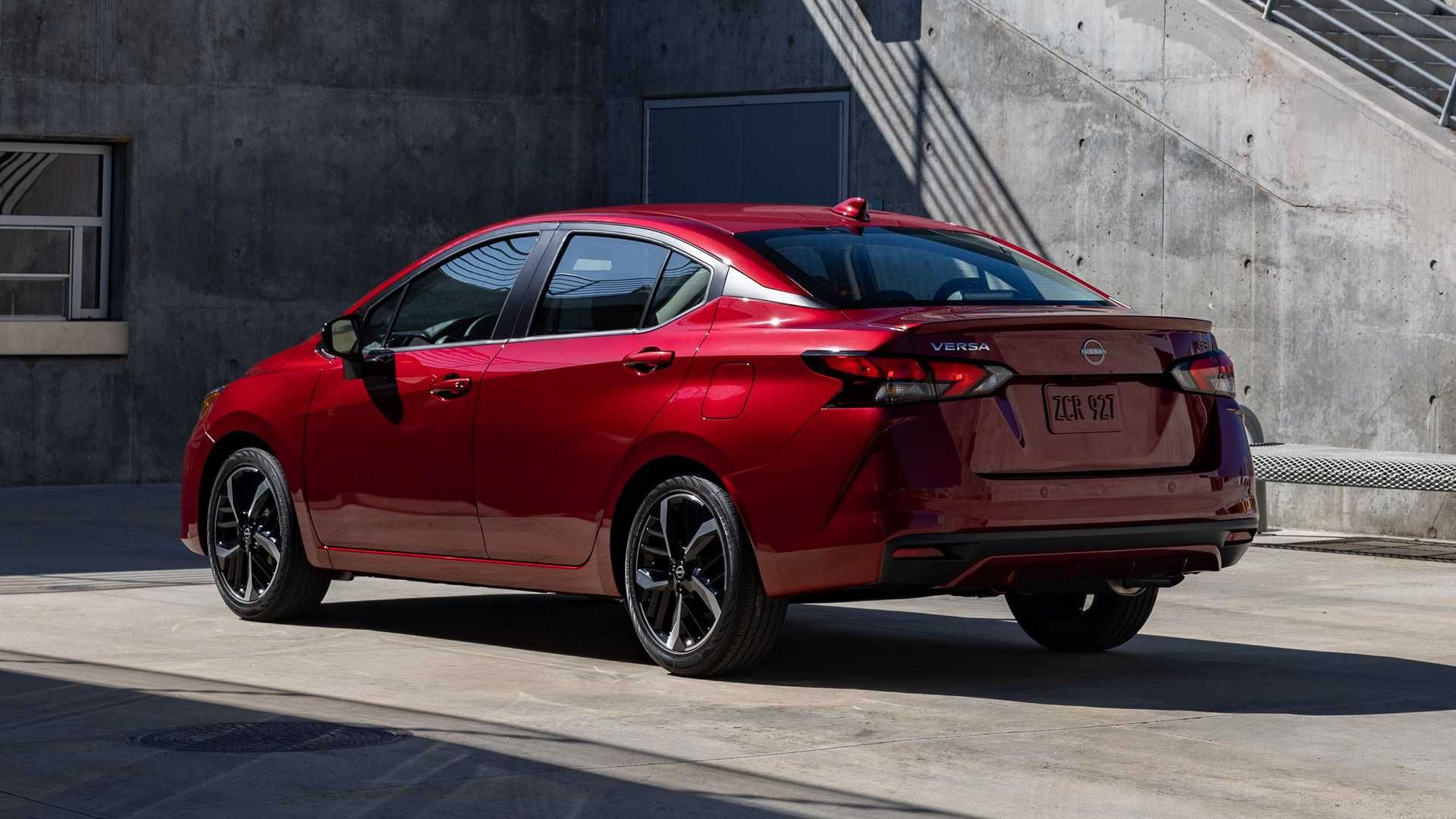
Only offered as a sedan, the Versa wears a rounded but respectable design, updated in 2023. A large, shield-style grille with horizontal bars gives the front end some visual width. The side profile borrows heavily from the Altima, especially in its flowing lines and distinct C-pillar design. Inside, the layout is clean and no-nonsense, with Nissan’s typical design cues and materials suited to its price point.
Under the hood is a 122-hp 1.6-liter inline-4 that delivers just enough punch for daily driving, while still hitting up to 35 mpg combined, according to the EPA.
The standard 5-speed manual transmission offers the most engaging experience, but the available CVT keeps the engine in its optimal power range with minimal fuss. The ride is soft and the steering competent, though there’s little in the way of excitement. For its class and price, though, it keeps cabin noise in check.
Inside, the Versa impresses with solid interior space. The front seats are comfortable, and the rear bench is usable for two adults—or three in tighter situations. The trunk is larger than what you’ll get in many compact and even midsize sedans, giving the Versa a practical edge.
5. Chevrolet Spark – ~3.6 Seconds
The Chevy Spark’s small size doesn’t translate to zippy acceleration. Its 1.4-liter engine paired with a CVT makes for dull, uninspired launches.
While fine for cruising, the Spark feels hesitant when you need a quick getaway from a red light or tight intersection.
Quick 0–30 mph acceleration can drastically improve your driving experience, especially in cities where short bursts of speed matter more than outright top-end performance.
The 2022 Spark ranks as an average choice in the used car market. It’s one of the smallest vehicles available, measuring just 143 inches from bumper to bumper. That compact size makes it ideal for squeezing into tight parking spaces and weaving through heavy city traffic.
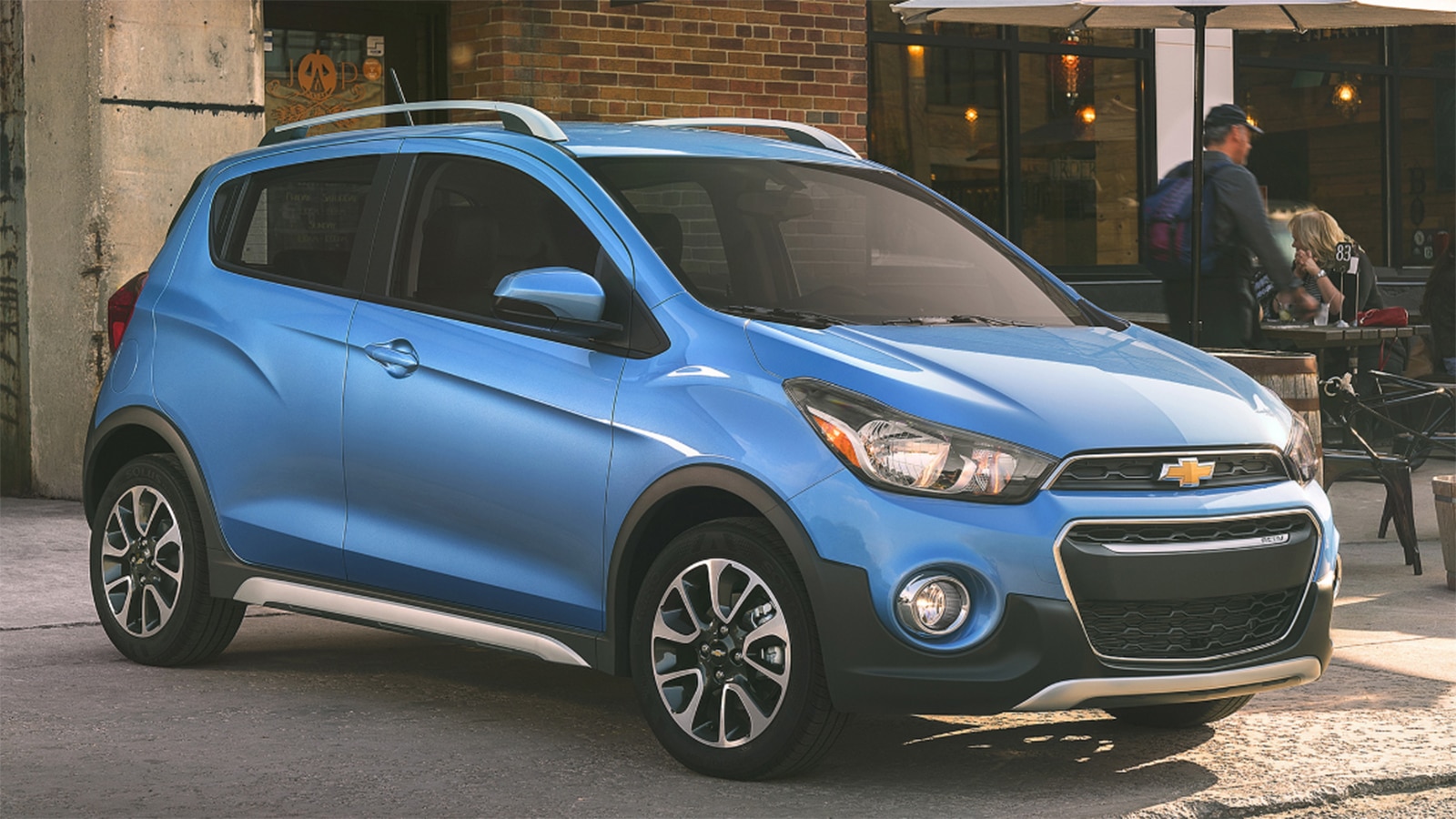
But on the highway, it struggles—its 98-horsepower four-cylinder engine labors noisily to reach speed. Inside, the Spark feels cramped and is filled with cheap-looking plastics. The standard features list is bare-bones, and only the highest trim level offers any advanced safety tech—and even that is limited.
On the plus side, the Spark’s infotainment system is intuitive and easy to use. Also in its favor, the 2022 model’s projected five-year ownership costs come in below average for the subcompact car category.
The Nissan Versa sedan is nearly three feet longer than the Spark but still compact enough to serve as a capable city car. It delivers a more comfortable ride, has a better-quality interior, and comes standard with more equipment than the Chevy.
If ultra-small size is non-negotiable, the Mitsubishi Mirage is another contender. It edges out the Spark in fuel economy and projected ownership costs, but in nearly every other respect, it makes the Spark look like the better car.
While EVs like the Tesla Model S Plaid and Porsche Taycan dominate this space with instant torque, many budget-minded gas cars struggle off the line due to weak engines and CVT tuning.
Whether you’re chasing thrills or just want to avoid holding up traffic, knowing your car’s low-speed performance can make a difference.

